How are the marstall muesli made?
We often talk and write about the good ingredients and valuable nutrients in our marstall muesli. But there is something else that contributes to their high quality, namely the careful production. We will show you how we make muesli for your horse.
Muesli are mixed feeds that are composed of different individual feeds in such a way that the energy and nutrient contents are optimally adapted to the breed, age, state of health or movement and stress of your horse. There are concentrated feeds such as marstall Turnier, lower-energy varieties such as marstall Freizeit or metabolically activating diet products such as the herbal muesli marstall Sinfonie. All classic muesli have one thing in common: They mainly consist of loose "flakes" as well as solid, pressed pellets.
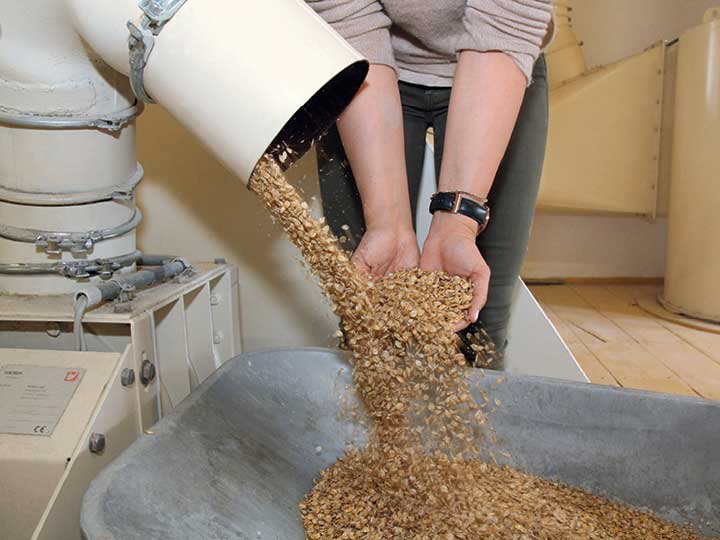
Cereal flakes are a component of muesli for horses. We show how they are made.
The production of pellets and cereal flakes is a separate process. We also produce these ourselves in our facilities. In two further reports we will show you how our pellets and cereal flakes are produced.
Weighing, checking, mixing
When the cereal flakes and pellets are ready, they must be mixed with other ingredients in the right proportions. To do this, flakes and pellets are weighed fully automatically according to the saved recipes and end up together in the mixer.
In addition to the cereal flakes and pellets, carrot flakes, apple pomace, lucerne, garlic flakes or marigolds are added, depending on the recipe. These raw materials are weighed by hand, for example in a big bag scale or a small component scale. This enables us to visually inspect these raw materials once again.
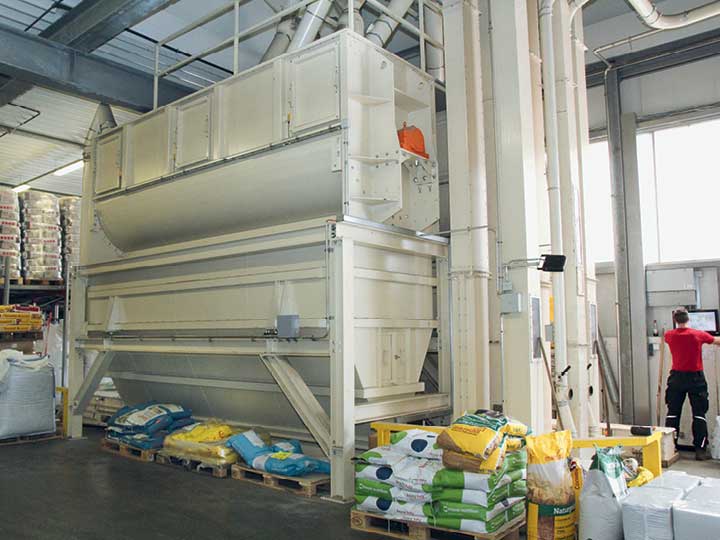
The pellets and cereal flakes are weighed fully automatically and enter the mixer.
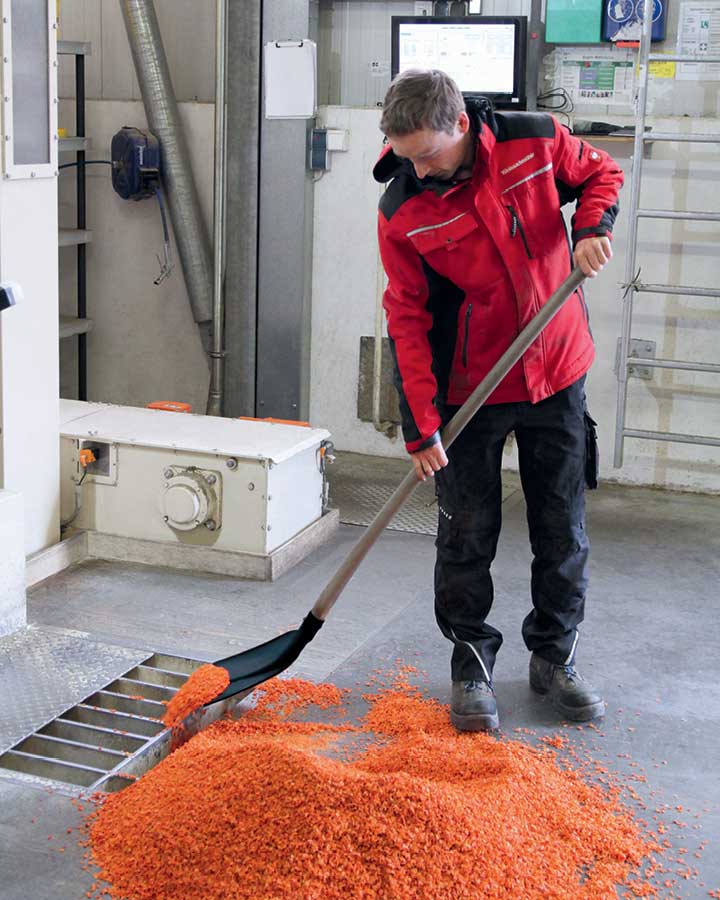
Additional raw materials like carrot flakes refine the mixture.
Then everything is mixed in the mixer for a certain time. Additional liquids such as oils or molasses can be added. A high mixing accuracy is very important, because the same amount of ingredients should be present in every kilo of feed.
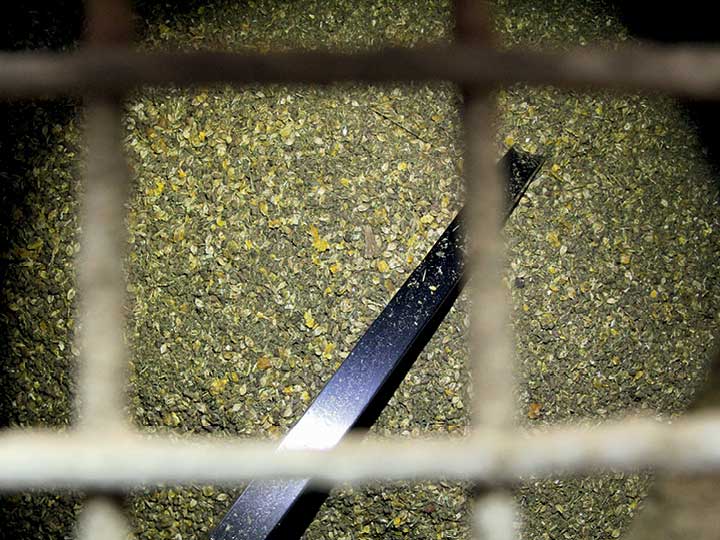
A good mixing of the ingredients ensures that each muesli portion contains all the important ingredients.
Into the bag!
The last production step is the bagging of the muesli into the appropriate bags. The feed is automatically weighed with the preset weight and filled directly into the bags. This bag is then sewn up, sometimes with a bag tag. At the end of the conveyor belt the sack is then stacked on the pallet with a gripper arm. This is why they always lie on top of each other so neatly.
For a final visual inspection, the product manager and the quality manager open some of the bags again. They confirm the quality of the muesli. If they discover any defects, they can take immediate action.
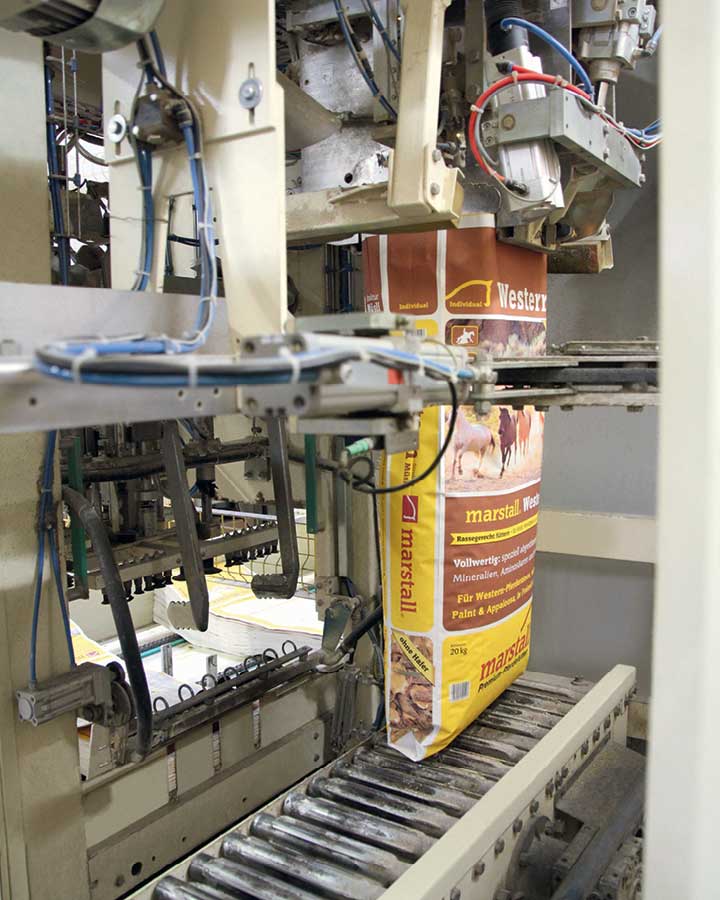
The right amount of muesli is automatically filled into a bag.
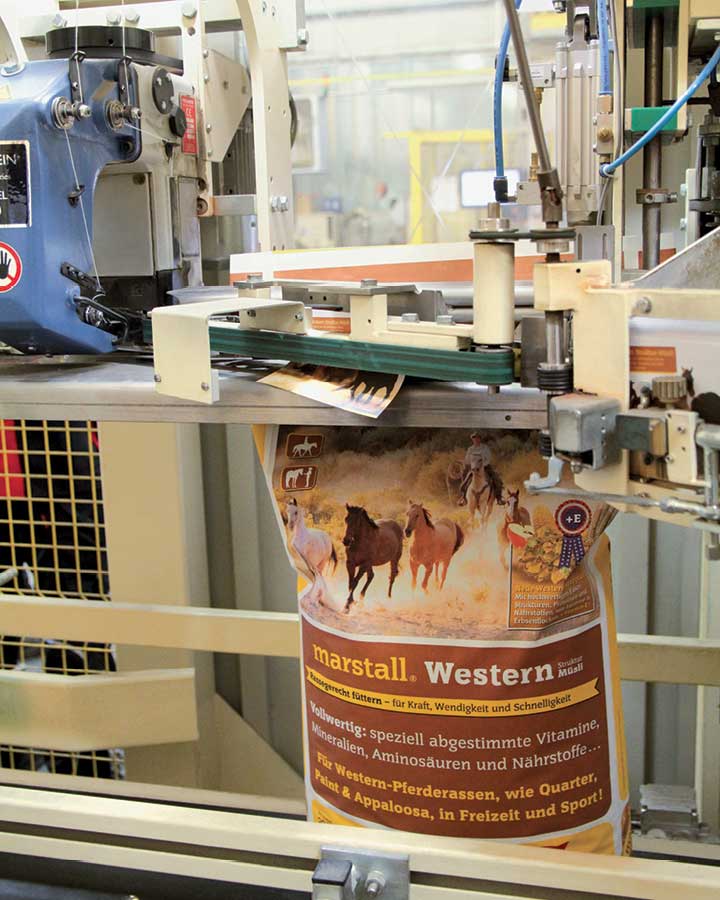
The bag is provided with a tag and sewn up well for the protection of the product.
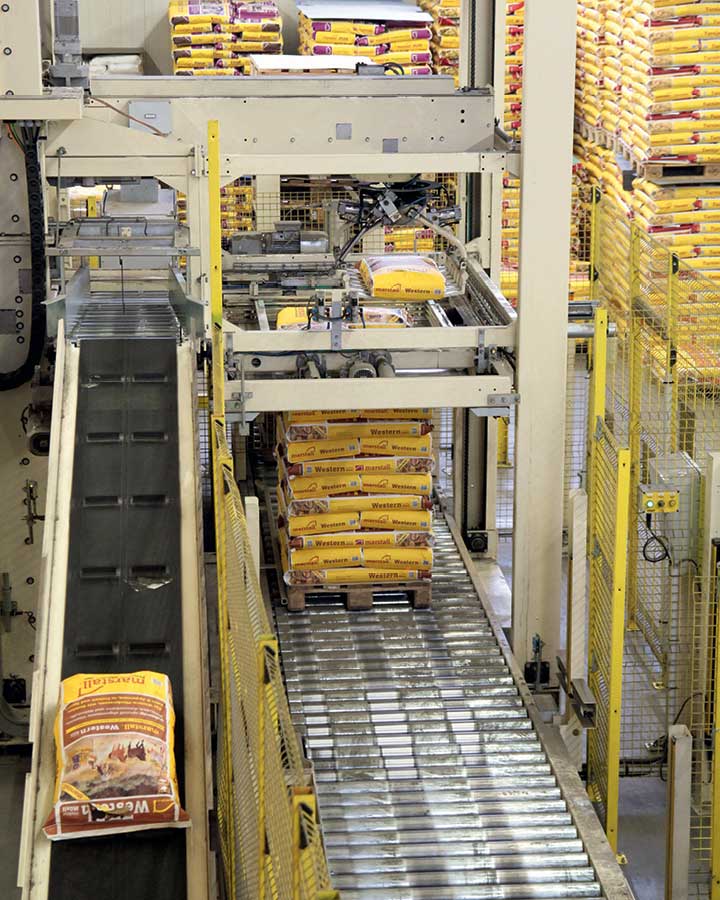
At the end of the conveyor belt, a gripper lifts the bags onto pallets.
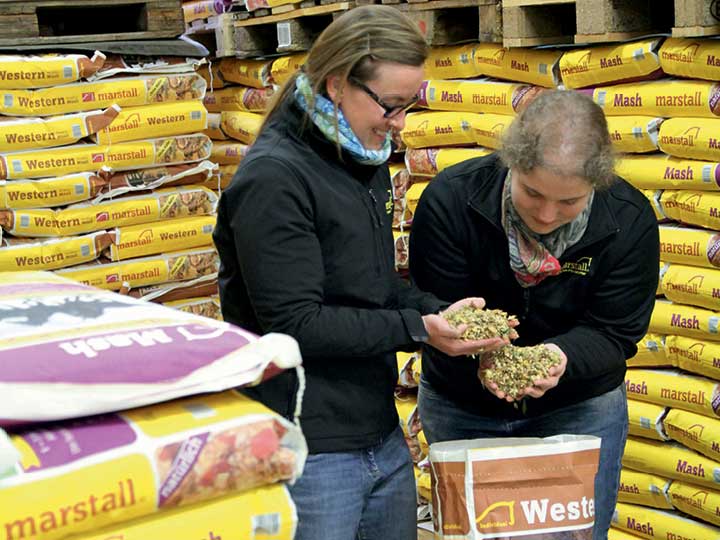
Some bags are opened again for the last quality control.
Once the quality control has been passed, the muesli is stored according to type and is picked and delivered when the order is received. The journey continues to the dealer and finally to your barn.
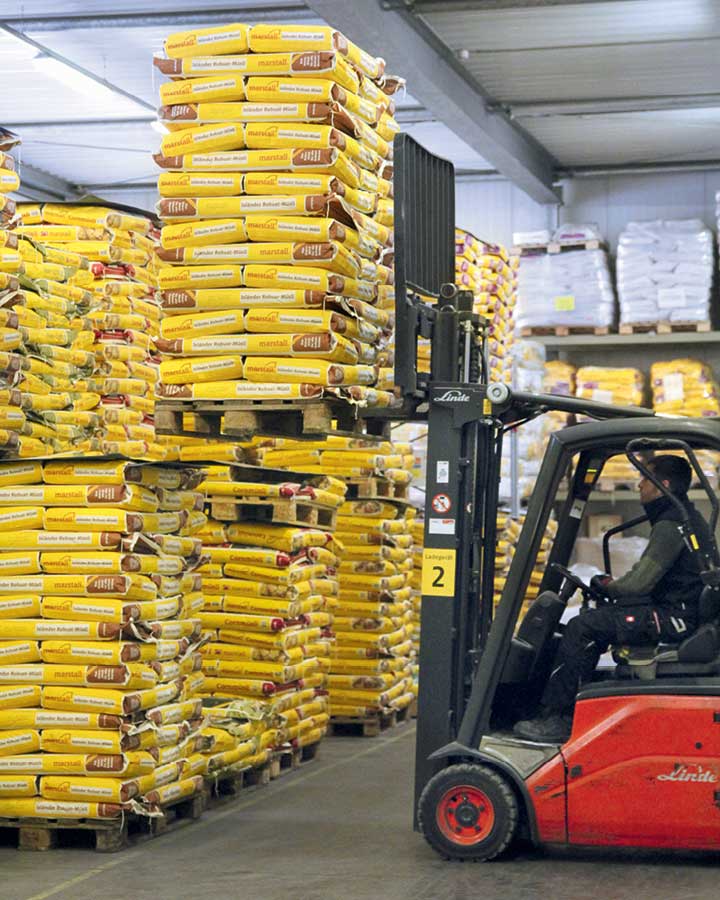
The feed bags are stored by type.
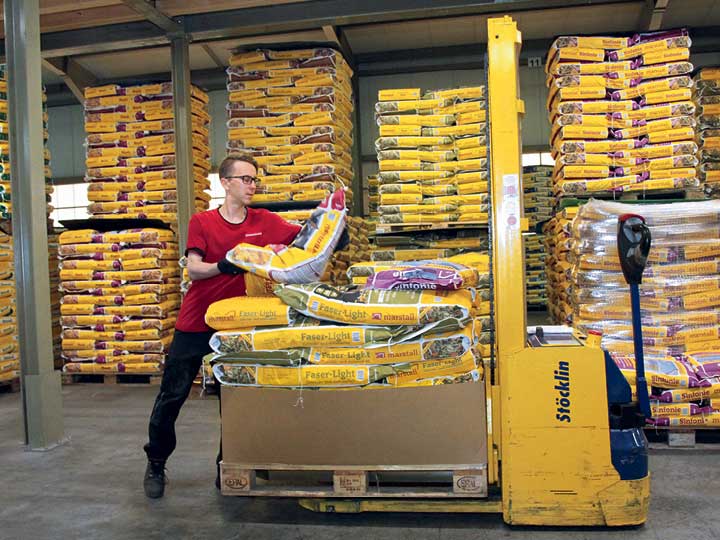
After receiving the order, the bags are picked and shipped.

